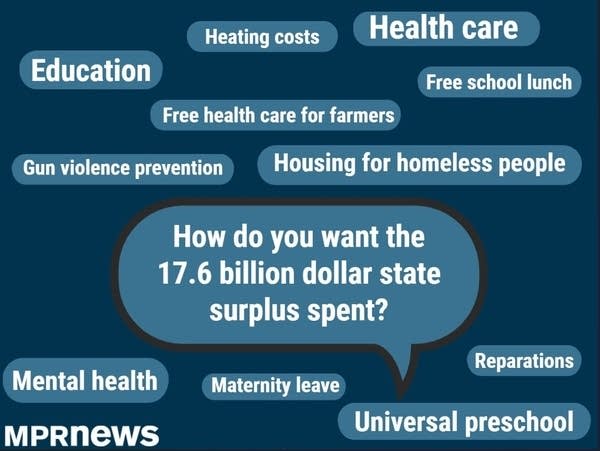How do you think Minnesota should spend its $17.6 billion surplus?

Minnesotans have lots of ideas on the surplus money should be spent, here were the responses we heard the most.
Sam Stroozas | MPR News
Go Deeper.
Create an account or log in to save stories.
Like this?
Thanks for liking this story! We have added it to a list of your favorite stories.


